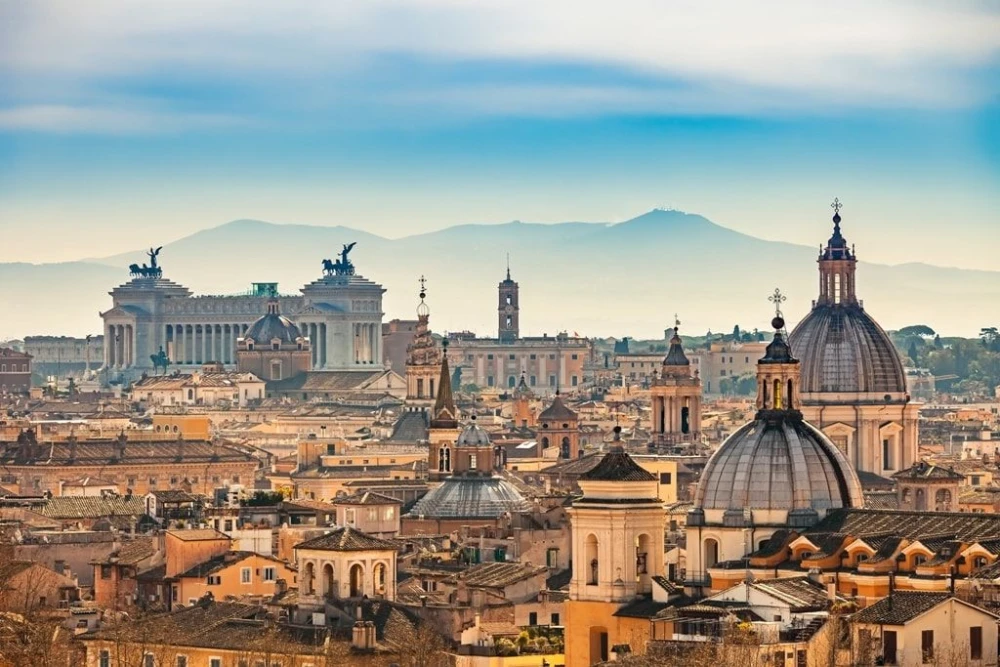15124, Maroysi, Athens, Greece

Civitavecchia (Rome), Ajaccio, Port Mahon, Ibiza, Cartagena-, Granada (motril), Lisbon, Funchal (Madeira), Miami
Approach Ports


Our gateway to the Eternal City, Civitavecchia has served as Rome's seaport since the 13th century, boasting a long and venerable history. Its location near the modern city, made it a perfect vacation resort for emperor Trajan, who built a pleasure villa. while Bernini and Michelangelo designed the harbor fortifications. Yet the Eternal City, the ancient capital of the Western World and the center of Christianity for nearly 2.000 years, is our main reason to be here. YYou can visit the ruins of the Forum and the Colosseum, throw a coin in Fontana di Trevi to make sure you return to Rome one day, take a photo in front of the Vatican, view the splendors of the Sistine Chapel or climb the Spanish Steps, once the heart of Rome's Bohemian Quarter and enjoy a delicious gelato, in the glamorous area.
The capital of Corsica, Ajaccio is the island's largest town and hometown of Napoleon Bonaparte. Everywhere you'll discover traces of the island's long and colorful history, from medieval walled towns to seaside villages guarded by 16th-century towers. One can stroll past the cathedralwhere the future emperor was baptized and the Casa Buonaparte, a museum devoted to the imperial glory. Corsica's nature is characterised by dramatic shoreline cliffs, small coves and golden beaches but it is also the "scented isle", with its stony mountains carpeted in macchia, a low, thick, chaparral comprised of aromatic Corsican mint, rock roses and myrtle.
Mahon is the capital city of Minorca, the second largest of the Balearic Islands, after Majorca. It is an important commercial and industrial centre, located in the eastern part of the island and has one of the deepest natural points in the world. Due to the wealth generated by tourism the historical capital of Mahon was renovated towards the end of the 20th Century and is now famous for its architecture, fairs, festivals and fiestas and offers visitors the beautiful mix of old and new architecture.
One of Spain's Balearic Islands, Ibiza lies about 50 miles off the coast of Spain. Over the course of its history, it has been claimed by the Phoenicians, Romans, Vandals, Byzantines, Moors, Greeks and Carthagenians. Today's cruise visitors come for the vibrant nightlife at the ever so famous night clubs, for the sunny beaches, the clear waters and a little historical flavor. The fortified upper section of Ibiza Town depicts Renaissance architecture and has earned it recognition as a UNESCO World Heritage Site.
Cartagena is major naval station located in south-eastern Spain, in the autonomus Region of Murcia. Since its foundation in 229 B.C, it has been inhabited by several cultures which have left their mark on its artistic heritage as one of the most important defensive ports in the country. The highlights of the city include the Muralla del Mar ('Sea Wall'), built by Charles III (18th century), the Old Cathedral located on the Camino del Parque Torres (behind the Muralla del Mar wall), the recently restored Roman Theatre (among its numerous other Roman remains, built between the 5th and 1st centuries BC), the National Museum of Underwater Archaeology ARQUA (at Paseo Alfonso XII, 22), the Town Hall, a gem of modernist architecture dating from the early 20th century and a number of modernist buildings made for its military fortifications. The best way to learn more about the Modernist architecture of Cartagena is to take a walk along the Calle Mayor, which leads off the Plaza del Ayuntamiento square. Here visitors will find the houses of Cervantes and Llagostera, by the Cartagena architect Victor Beltrí. Time given, don't miss Concepción Castle, built on one of the five hills of the old Carthagena and today home of the Centre for the Interpretation of Cartagena's History.
Motril is a beautiful town on the Mediterranean coast in the province of Granada, Spain. It has been a historic gateway for many civilizations. Motril is an ideal place for all kinds of water sports. Visit can enjoy many attractions of cultural interest
Lisbon, the capital of Portugal, on the southwest of the country, has been the main gateway for the rest of the planet for more than 19 centuries. Ships captained by Portuguese explorers like Bartolomeu Dias, Vasco da Gama and Ferdinand Magellan, skittered across the globe, hauling treasure home and making Lisbon a global capital. Draped across seven hills, Lisbon was once the center of a vast maritime empire that stretched from the west coast of Africa to the Spice Islands of the East Indies, until 1755, when a violent earthquake destroyed two-thirds of the city, leaving intact only the Alfama, the old Moorish quarter. Today, Lisbon is a stately city of Neoclassical buildings and wide plazas. Eternally linked to the sea, Lisbon's magnificent harbor is spanned by the longest suspension bridge in Europe. Among the city's landmarks are the iconic Castelo de São Jorge, the World Heritage Sites of Belém Tower and Jerónimos Monastery, both built in Lisbon's native Manueline architectural style.
Madeira is located in the north Atlantic Ocean, 520 km from the African coast and 1.000 km from the European continent. Today, it is a popular year-round resort, noted for its wine, flowers, landscapes and embroidery artisans. Madeira's capital Funchal, on the island's south coast, rises straight up from the sea and enchants visitors, with its red roofs and hibiscus easing gently down the lower slopes of Pico do Arieiro to the ocean. Time given, take the cable car toMonte Palace, in a 15-minute ride up and over the old town of Funchal and the Ribeira de Joao Gomes valley. When in town, wander along the Old centre, with its port and promenade, quaint and narrow winding streets, shops, cafés, bars and restaurants and view "Worker's Market", the 15th-century cathedral, the Theatre, the Town Hall and the waterfront.
-large.webp)
Itinerary







